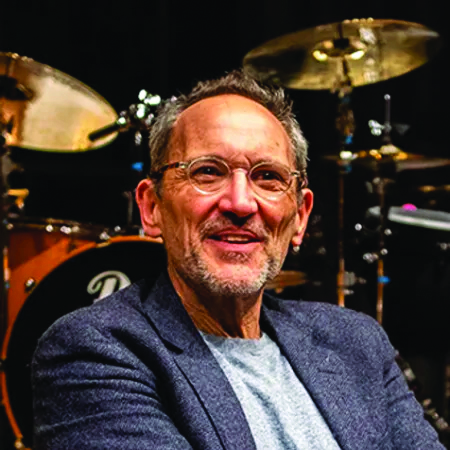ARUM DEM FAYER (AROUND THE FIRE)
Osvaldo Golijov
(b. La Plata, Argentina, December 5, 1960) arr. String Orchestra
Composed 2020; 6 minutes
For his latest composition for string quartet, Golijov worked with a large whiteboard alongside the piano he composes upon. There he drafted a list of guiding principles for the piece: clarity, line, light, elegance, grace, delight, rhythm, air in the harmonies, counterpoint, make believe (representation) and child wonder. The result evolved into a five-movement quartet titled Um Día Bom (A Good Day), depicting “a life from morning to midnight and beyond, but as if told to children.” This was premièred October 7, 2021 in Boston.
“The third movement, Arum dem Fayer (Around the Fire),” Golijov says, “is a traditional Yiddish song that also talks about the bliss of being together around a small fire. In my version, the song appears and disappears, as a ghost, in the midst of a slow processional and restrained tears. Schubert’s motif in the slow movement of Death and the Maiden [quartet] is in the background throughout the first section. A different manifestation of Death interrupts the processional in a short and furiously baroque appearance that opens the door to three funny and mischievous dance variations on
the B section of the Yiddish song. The movement closes with the re-emergence of the opening processional. I wrote
this movement in memory of Guillermo Limonic, who loved singing in Yiddish, and died of Covid in the early days of
the pandemic.”

My spiritual home is chamber music, especially string music,” says Argentinean-American composer Osvaldo Golijov, the Festival’s 2018 composer-in-residence. Golijov, a Romanian Jew by birth, but born in Argentina, lived for six years in Israel and for the greater part of his life in Massachusetts. He brings a musical language that is infused with an ever-widening influence from many sources. The ingredients include folk music from many traditions — the Western repertory from many eras, the Judeo-Christian liturgy, tango and other Latin American dance forms — all of which remain in a state of flux in a highly individual musical voice with a meaningful musical message.